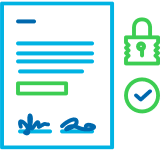Blogs
When “Good Enough” Fails: Why Spirion Succeeds Where Microsoft Purview Falls Short
Discover how Spirion solves Microsoft Purview’s reporting, visibility, and compliance gaps with accurate discovery and automation.
By Spirion on June 23, 2025
Compliance & Regulations Data Discovery DSPM GDPR Sensitive Data
Navigating DOJ’s New Data Security Program (DSP): How Spirion’s DSPM Solution Safeguards National Security Data
Learn how Spirion’s DSPM solution helps high-risk industries meet the DOJ’s new Data Security Program (DSP) standards and protect national security data.
By Spirion on June 4, 2025
Compliance & Regulations Data Breach Data Discovery Data Management & Governance Data Privacy Data Security DSPM Sensitive Data
Accelerate Sensitive Data Discovery with Spirion’s Differential Scanning Technology
Discover how Spirion’s Differential Scanning reduces system strain and scan times without compromising accuracy—empowering faster, AI-ready sensitive data discovery for modern DSPM strategies.
By Spirion on June 3, 2025
Data Discovery Data Management & Governance Data Security DSPM Sensitive Data
Why Data Classification is the Unsung Hero of Financial Data Security
Automated data classification helps financial institutions secure sensitive data, meet compliance, and build trust at scale.
By Spirion on May 23, 2025
Compliance & Regulations Data Discovery Data Privacy Data Security GDPR PCI Sensitive Data
Beyond the Firewall: Protecting Student Data with Intelligent Data Classification
Protect student data with intelligent classification that finds, secures, and governs sensitive info across your campus and cloud environments.
By Spirion on May 21, 2025
Compliance & Regulations
From Reactive to Proactive: Achieving Data Privacy Through Automation
Shift from reactive security to automated data privacy with Spirion. Discover, classify, and remediate sensitive data accurately and at scale.
By Spirion on May 19, 2025
Classification Compliance & Regulations Data Discovery Data Privacy Data Security DSPM Remediation Risk Management Sensitive Data
Industry-Specific Data Classification: Why One-Size-Fits-All Doesn’t Work
Discover how tailored data classification improves compliance and risk management across industries like finance, healthcare, retail, and more.
By Spirion on May 16, 2025
Compliance & Regulations PCI Sensitive Data
Why Sensitive Data Identification Is the Key to Proactive Data Privacy
Discover why identifying sensitive data is essential for data privacy, risk reduction, and compliance in today’s complex, decentralized environments.
By Spirion on May 14, 2025
Compliance & Regulations Data Privacy Risk Management Sensitive Data
